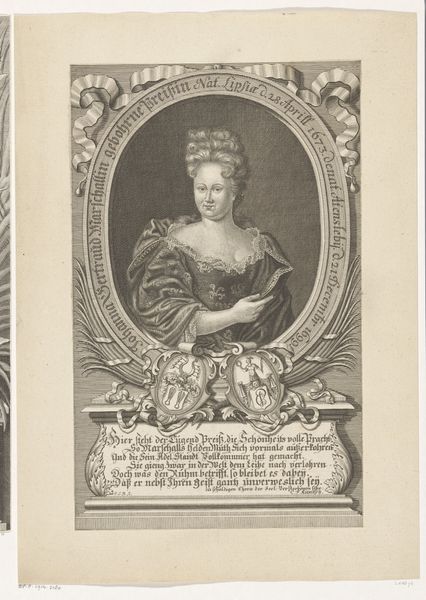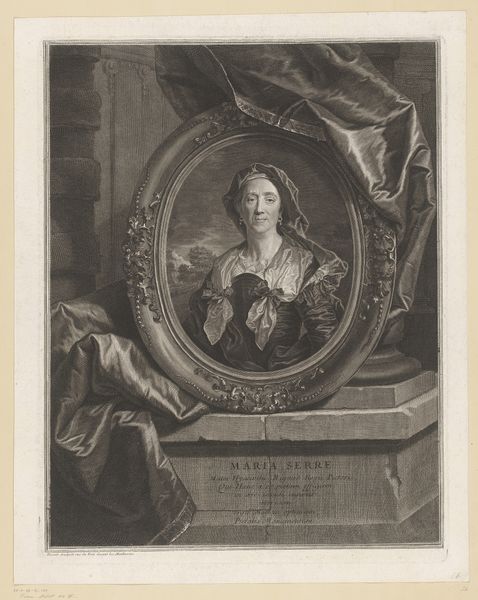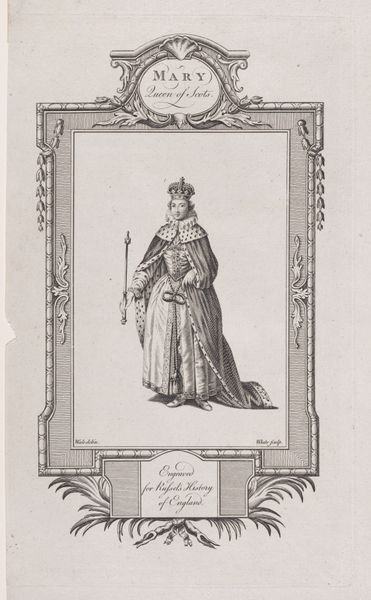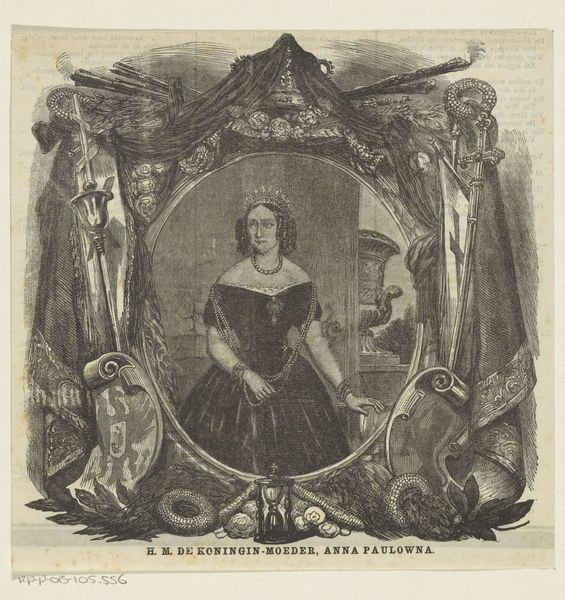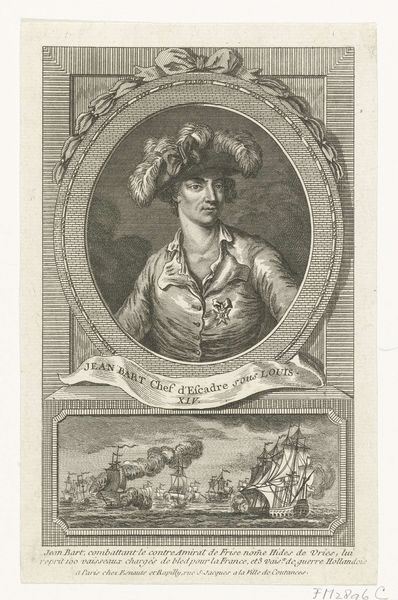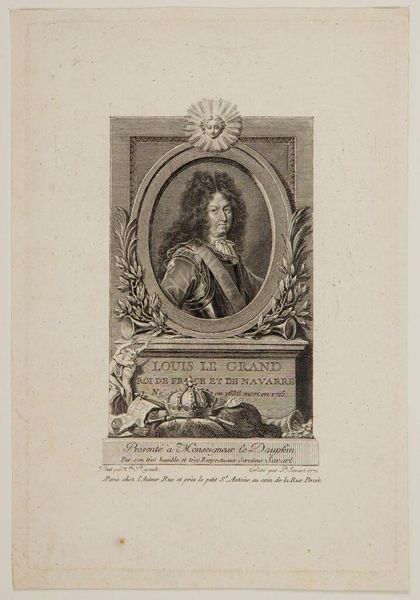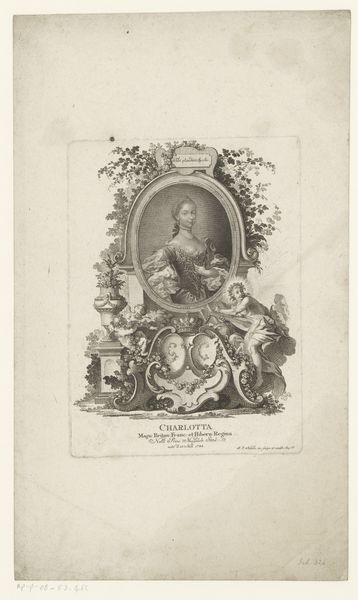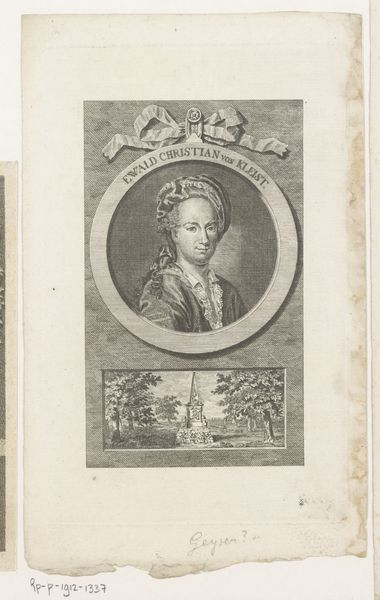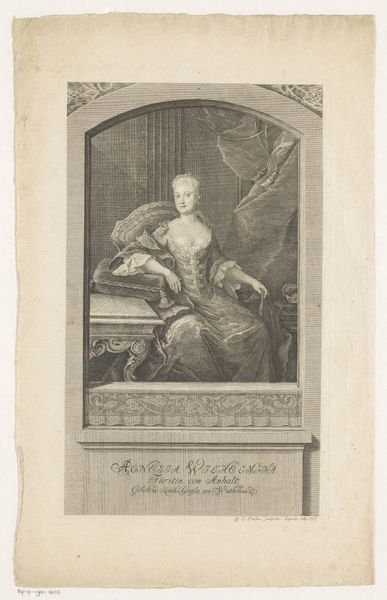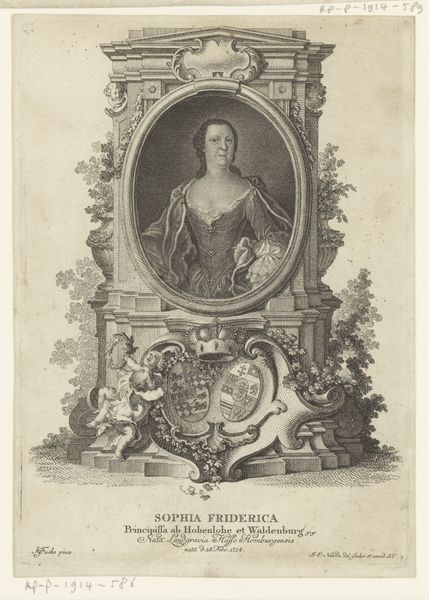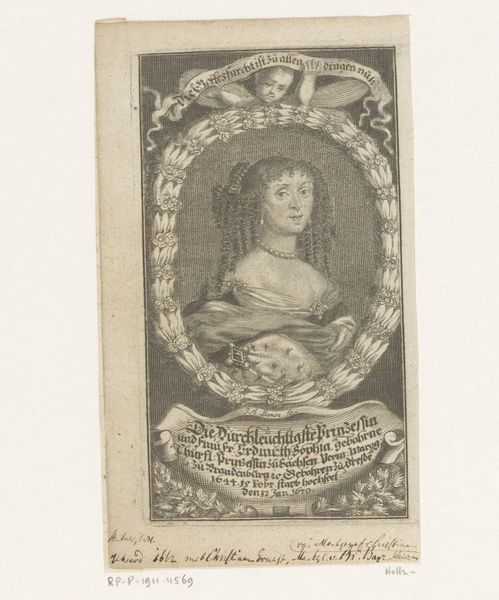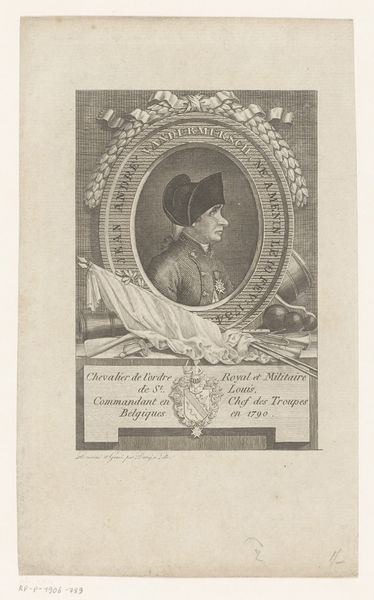
Rouwnummer van De Hollandsche Illustratie bij de uitvaart van Anna Paulowna, 1865 1865
0:00
0:00
Dimensions: height 395 mm, width 288 mm
Copyright: Rijks Museum: Open Domain
Editor: Here we have a print from 1865, titled "Rouwnummer van De Hollandsche Illustratie bij de uitvaart van Anna Paulowna," by Edouard Vermorcken. It's a woodcut depicting Anna Paulowna, and it feels very formal, almost like a memorial. What symbolic weight do you think this image is trying to convey? Curator: Notice how the portrait of Anna Paulowna is framed by drapery and surrounded by symbolic objects: flags, shields, even what looks like a snake consuming its own tail—the Ouroboros. What might these elements signify in the context of a royal death announcement? Editor: Well, the flags and shields probably represent her status and power as Queen Mother. But the snake...is that about rebirth, maybe? Curator: It certainly suggests cyclical time and continuity. Consider how visual symbols provide reassurance after loss, speaking to an enduring national identity. It could imply that, though a monarch has passed, the nation persists. How does Vermorcken use that symbolism to present a particular cultural memory of the Queen? Editor: He's making her passing seem less like an end and more like a transition in the ongoing story of the Dutch monarchy. The symbols tie her to something bigger and timeless. Curator: Exactly! It's a way of using imagery to manage and shape the emotional landscape surrounding a major historical event, invoking national pride even in mourning. And those symbols still carry a lot of weight today, don't you think? Editor: I do. Thinking about them historically, you really see how much they can say. Thank you! Curator: My pleasure! It’s been insightful exploring those themes with you.
Comments
No comments
Be the first to comment and join the conversation on the ultimate creative platform.
